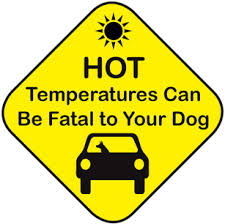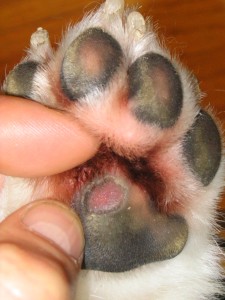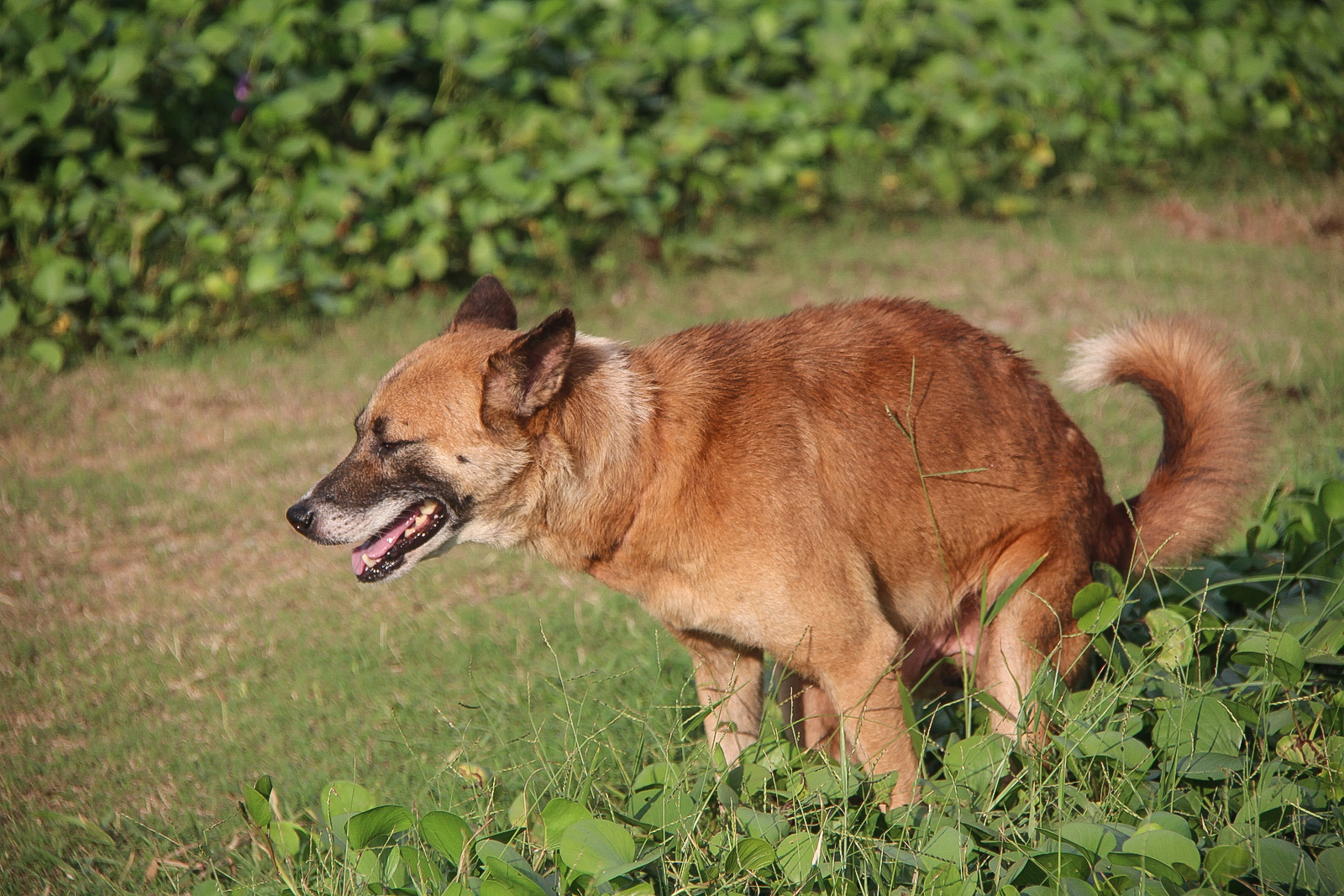Last Updated on November 1, 2023
Keeping your pet fit and healthy is an important aspect of ensuring that they lead a good and fulfilling lifestyle. Bringing your pets out for your routine runs is a good way to achieve that. However, more often than not, you would inevitably notice that some of the dogs are completely tired and lagging behind the oblivious owners. Or, you would notice that the dogs are clearly not suited for running at all. It pains us to see how misinformed these owners are about the dangers of over-exercising your dog, and hence we intend to write an article about it.
Dangers of over exercising your dog
In an earlier article, we wrote about the top 10 inactive dog breeds.If your dog falls into that list, then perhaps you would need another companion for your daily runs.
Having said that, it is important to note that dogs generally do not sweat as we humans do. However, they only sweat through areas that are not covered by fur, for example, the nose area. Their main way of cooling themselves is by panting, which helps to evaporate the moist parts of the area around their mouth. This is why dogs are more suited to be trained under cooler conditions than during the hotter seasons.
First of all, let us take a look at some of the tell-tale signs that your dog is too tired from exercising and you should stop all activities with them. If you notice that your dog is lagging behind you during runs, or your dog keeps looking at you while running, it is a sign that the canine is in need of rest. Also, excessive panting could also mean that your dog is reaching fatigued and you should stop all activities with her. Another point to note is to check your dog’s energy level after the exercise. If she displays signs of extreme fatigue, it means that you have already over-exercised her.
One of the dangers of over-exercising your dog is heat stroke.
Heat Stroke

Like humans, dogs can get heat stroke too. Heat stroke occurs when the body cannot eliminate heat fast enough, and the body temperature rises quickly. The thick coat that certain breeds have makes them susceptible to heat stroke when exercising. Also, dogs cannot communicate with us to tell us that they are not feeling well. We could only guess and infer from their behavior. It is always good to choose to exercise your dog in the early mornings or late evenings when the heat isn’t too intense for your dog.
Pad Abrasions

Dogs have pads to protect them from the floor, like how we need shoes too. However, while we can easily replace our shoes, we cannot replace their pads. When your dogs overexercise, their pads can get abrasions against the floor, and that can cause extreme discomfort to them. Although they don’t directly cause death in dogs, it can be extremely painful to them. I have read blogs on dogs whereby the owners regret not taking care of their dogs and forcing them to run as much as they can, so as to lose more weight. These ignorant owners caused the dog’s paw pads to suffer abrasions, and a mere touch to the pads can be painful for them after the exercise. Do limit the dog’s exercise to prevent this from happening.
Blood In Urine
A reader informed us about this danger, and we subsequently did research about it. If you detect blood in your dog’s urine, it can signify 2 problems, one of which is a unitary tract infection, and the other is Rhabdomyolysis, which is a metabolic disease that usually affects active dogs.
Rhabdomyolysis is the breakdown of the dog’s muscles, and during the process, it releases a substance into the urine that makes it resembles blood. This is a sign that you are over-exercising your dog. It can cause discomfort to dogs, and if it persists more than a day, do visit the vet to seek professional advice. Usually, if the dog is suffering from Rhabdomyolysis, the common solution is just to drink enough water, and wait it out. However, if the symptoms persist after a day, do visit the vet for professional advice.
Joint and bone injuries
Joint and bone injuries can occur when a dog is over-exercised, especially in large breeds that are more prone to developing joint problems. Some common joint and bone injuries that can occur as a result of over-exercising a dog include:
- Hip Dysplasia: This is a genetic condition that causes the hip joint to develop improperly, leading to arthritis and chronic pain. Dogs with hip dysplasia are at a higher risk of developing joint problems if they are over-exercised.
- Elbow Dysplasia: Similar to hip dysplasia, elbow dysplasia is a genetic condition that can cause chronic pain and arthritis in the elbow joint.
- Cruciate Ligament Injury: This is a common injury in dogs, particularly in larger breeds. The cruciate ligaments are located in the knee and provide stability to the joint. When these ligaments are torn or stretched, it can cause pain, lameness, and arthritis.
- Osteoarthritis: This is a degenerative joint disease that can occur in any joint in the body. It is characterized by inflammation, pain, and stiffness in the joints. Over-exercising a dog can increase the risk of developing osteoarthritis.
Behavioral problems
Over-exercising a dog can also lead to behavioral problems such as aggression and hyperactivity. A dog that is always on the go and does not get enough rest may become anxious or irritable. They may also become destructive and develop separation anxiety. Indeed, if the dog has been consistently pushed to the edges, it is very likely for the dog to be highly irritable and anxious, leading to aggressive behavior. They may become more territorial and protective of their space, and may become more prone to biting or growling.
Also, if the dog that does not get enough rest and is constantly over-exercised, they will also become hyperactive. They may have a hard time sitting still and may have trouble focusing. This can make it difficult to train them and can lead to destructive behavior. Lat but not least, over-exercising can lead to fatigue and can make a dog less able to focus on training and commands. This can lead to lack of progress in training and behavioral issues.
Recognizing the Signs of Over-Exercising: A Closer Look at the Warning Signals
Being able to identify the signs of over-exercising in your dog is crucial for preventing potential health issues and ensuring their well-being. Let’s delve deeper into the warning signals that may indicate your dog is being overworked.
- Excessive panting or difficulty breathing: While panting is normal during exercise, excessive or labored panting can be a sign that your dog is overexerting themselves. If your dog continues to pant heavily even after resting, it may be an indication that they need a break from their current exercise routine.
- Limping or favoring one leg: If your dog starts limping or favoring one leg during or after exercise, it could be a sign of an injury caused by over-exercising. Consult your veterinarian to determine the cause and adjust your dog’s exercise regimen accordingly.
- Sluggishness or reluctance to move: A sudden decrease in energy levels or reluctance to engage in physical activity may signal that your dog is experiencing fatigue from over-exercising. Allow your dog ample time to rest and recover before resuming their exercise routine.
- Increased thirst or urination: Excessive thirst and frequent urination can be signs of dehydration or other health issues related to over-exercising. Ensure your dog has access to fresh water during and after exercise, and consult your veterinarian if these symptoms persist.
- Behavioral changes: As mentioned earlier, over-exercising can lead to increased stress and anxiety in dogs, resulting in behavioral changes such as irritability, aggression, or excessive barking. Monitor your dog’s behavior closely and adjust their exercise routine if necessary to maintain a balanced and happy temperament.
Determining Your Dog’s Exercise Needs: Factors to Consider
Understanding your dog’s unique exercise requirements is essential for creating a safe and effective fitness plan. Here are some key factors to consider when determining your dog’s exercise needs:
- Age: A dog’s age plays a significant role in their exercise requirements. Puppies have shorter attention spans and developing joints, requiring shorter, more frequent play sessions. Adult dogs typically need longer, more structured exercise routines, while senior dogs benefit from low-impact activities tailored to their reduced mobility and energy levels.
- Breed: Different breeds have varying exercise needs based on their size, energy levels, and genetic predispositions. For example, working breeds like Border Collies or Labrador Retrievers generally require more physical activity than smaller or less active breeds like Bulldogs or Pugs. Research your dog’s breed characteristics to better understand their exercise requirements.
- Size: Larger dogs often need more exercise to maintain a healthy weight and prevent joint issues, while smaller dogs may require less activity due to their compact size and lower energy levels. However, individual energy levels can vary, so it’s essential to monitor your dog’s response to exercise and adjust accordingly.
- Overall health: Your dog’s overall health can significantly impact their exercise needs. Dogs with medical conditions, such as arthritis or heart disease, may require modified exercise routines to accommodate their limitations. Consult your veterinarian for guidance on creating a safe and appropriate exercise plan for your dog’s specific health needs.
- Temperament: Your dog’s temperament can also influence their exercise requirements. High-energy dogs may need more physical activity to expend their energy and maintain mental stimulation, while more laid-back dogs might be content with less intense activities.
By considering these factors and consulting with your veterinarian, you can develop a personalized exercise plan that meets your dog’s unique needs and promotes their long-term health and happiness.
Conclusion
Do note that these are just 5 of the dangers of over-exercising your dog. It is imperative that we take cues from our dog’s behavior and see how it is different from their usual behavior, and determine if the dog is in need of rest, or in need of immediate medical attention.
 Dog N Treats All dogs deserve to be pampered
Dog N Treats All dogs deserve to be pampered


